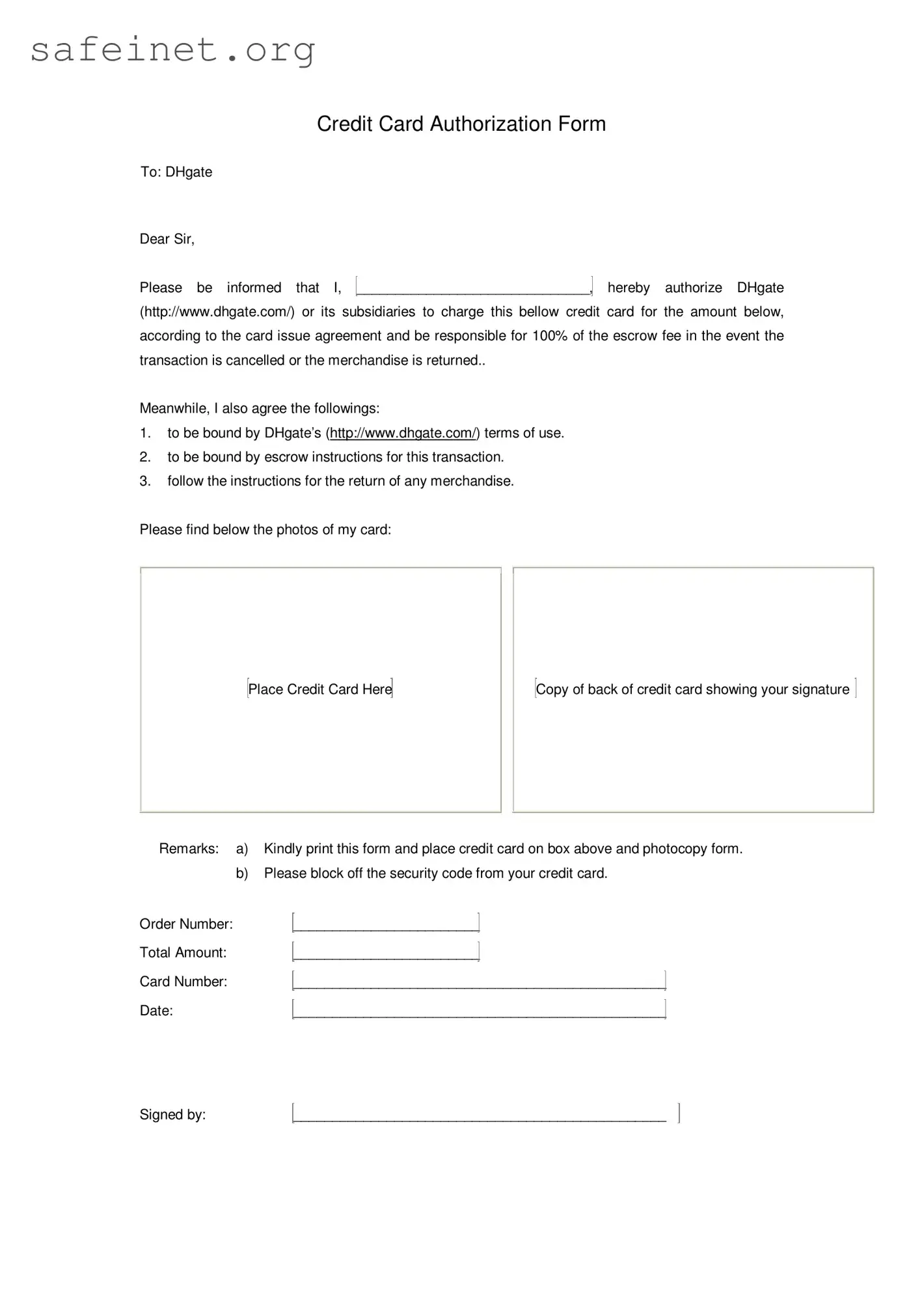The first document that bears similarity to the DHgate Credit Card Authorization form is the general Credit Card Authorization form used by many businesses for transactions. Like the DHgate form, this document allows customers to provide consent for their credit card to be charged for a specific amount. It typically includes fields for cardholder information, the credit card number, and the transaction details. Customers usually must sign to confirm they authorize this charge, thereby protecting both parties in the transaction.
Another relevant document is the Purchase Order (PO). Organizations often use this to formalize a commitment to buy goods or services. Similar to the DHgate form, a Purchase Order outlines the specifics of the transaction, including pricing and the items being purchased. Both documents function to ensure clarity and mutual agreement between the buyer and seller, reinforcing the expectations for each party involved.
The Payment Authorization form also shares characteristics with the DHgate document. This form enables a customer to give permission for a vendor to charge their account without additional confirmations for every transaction. Like the DHgate form, it requires the signature of the customer, providing a layer of security and agreement that the payment can proceed as outlined.
The Escrow Agreement resembles the DHgate authorization in that it often includes terms and conditions governing a transaction. Escrow agreements establish a neutral third party to hold funds until all parties meet their obligations. Similar to the DHgate form, it outlines who is responsible for escrow fees and what happens if a transaction is canceled or returns are made.
The Credit Card Decline Notification is another document that aligns with the theme of authorization forms. While it's not a permission document like the DHgate form, it nevertheless pertains to the credit card transaction process. If the authorization fails, this document notifies stakeholders that a payment attempt was unsuccessful, ensuring all parties are aware of the status of the transaction just like the DHgate form communicates necessary transaction details.
The Service Agreement also has several parallels with the DHgate authorization form. Businesses typically engage in these contracts to clarify responsibilities, deliverables, and payment methods. Just as the DHgate form requires an agreement to terms and conditions, a Service Agreement outlines the expectations between a service provider and a client, helping to mitigate misunderstandings.
The Credit Card Receipt offers another point of comparison. Though it serves as proof rather than an authorization document, it encapsulates similar transaction information, including card details and the amount charged. Both documents strengthen the transaction record between the consumer and the vendor, ensuring that all agreed-upon amounts are documented.
The Subscription Agreement is also akin to the DHgate form in that it involves authorization for recurring payments. Similar to the credit card authorization, this document requires a user’s consent to charge their account on a schedule, detailing terms and conditions related to the subscription services. Both aim to secure consent and clarify obligations surrounding payment.
A Gift Authorization form may serve similar purposes in a specific context. This document is used when someone wants to authorize a purchase on another person's behalf, usually in gift-giving scenarios. Like the DHgate form, it often includes the details of the transaction and requires the authorization of the cardholder, reinforcing responsible use of the credit card.
Lastly, an Online Payment Agreement is a document that signifies permission to charge an individual's card for online transactions. Much like the DHgate credit card authorization form, it includes specific consent for charging the agreed amount and often contains information about return policies. Both documents aim to protect all parties involved by clearly communicating the terms of payment.

